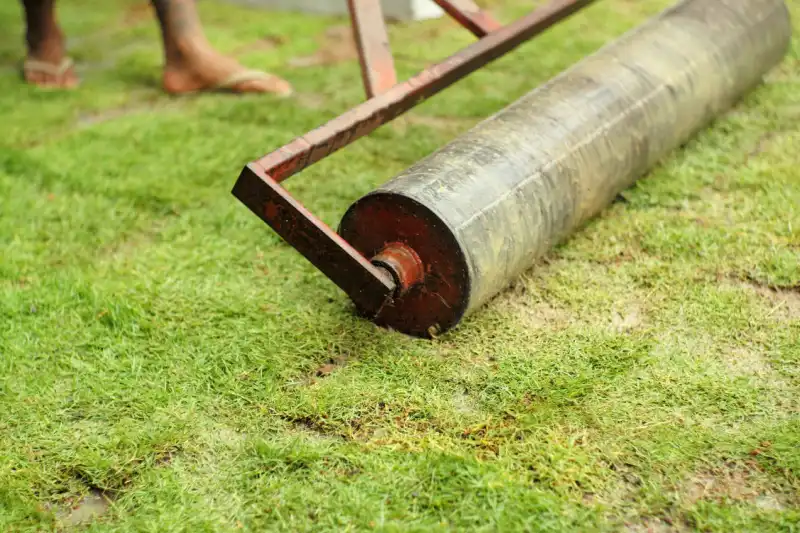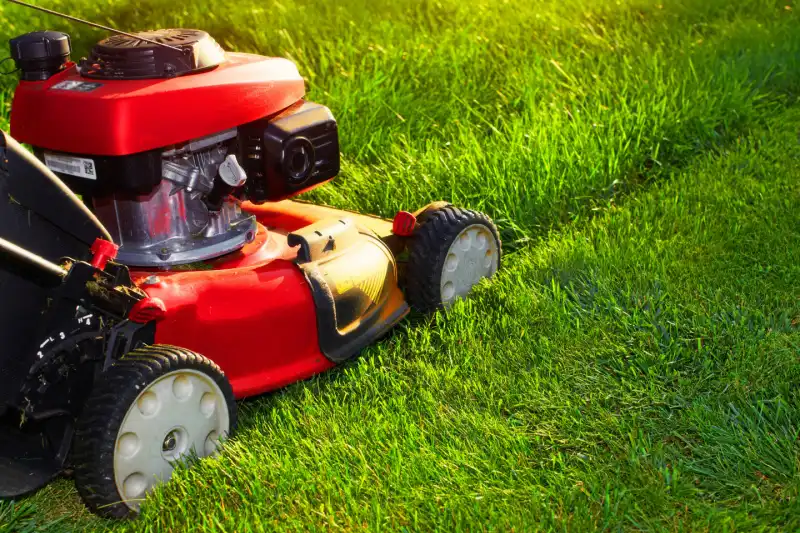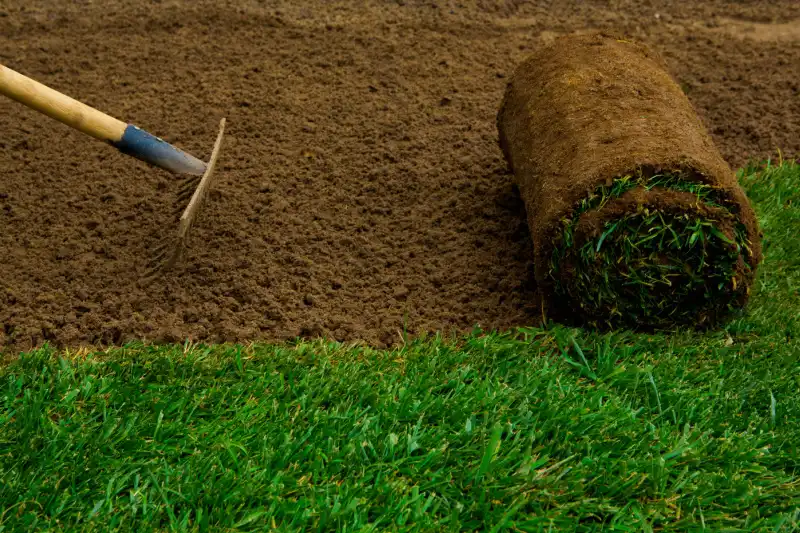
A lumpy lawn doesn’t just lower the curb appeal of your home and make it difficult to mow and rake. It also creates a trip hazard, which increases the risk of injury. The last thing you’d want is for your children or guests to trip on your bumpy lawn or twist an ankle in a divot. Additionally, an uneven lawn can lead to drainage issues and even damage the foundation of your home if the water runs toward your house.
We’ll help you avoid these unpleasant consequences by explaining exactly how to level a lawn. In fact, we’ll break it down even further. We’ll describe how to level your lawn if it’s mildly lumpy, moderately uneven, or severely uneven.
First, let’s review some of the reasons your lawn may be bumpy in the first place.
What Causes an Uneven Lawn?
Most properties are graded before a home is built. Over time, however, a lawn can become uneven for a variety of reasons, such as:
Critters
Raccoons, skunks, and crows love pecking and scratching at grass to get at tasty grubs in the soil. Even worse, moles, voles, and rabbits will dig tunnels and lairs underground.
Insects
Certain insects can plow through your soil and also attract the previously mentioned critters to your yard.
Lawn Diseases
Diseases like dollar spot, fairy rings, and brown patch can harm your grass, leaving bald spots on your lawn that are susceptible to erosion over time.
Foot Traffic
It’s great if you and your kids love spending time on the lawn, but a lot of foot traffic can wear down grass in certain areas. This is especially true if family members have favourite routes to different areas of the yard.
Pets
We know you love your dog, but your pooch may be burying their bones and toys in the yard, digging holes for fun, or even damaging grass with their urine. If you haven’t implemented dog-friendly landscaping, there’s a good chance you’re dealing with some pet-related yard issues, including an uneven lawn.
Yard Projects
Hardscape installations, broken sprinklers, or even fencing installations can change the way water flows through your yard, causing damage and erosion.
Tree Roots
Over time, roots from trees can grow through your yard, creating major unevenness and tripping hazards. The roots may even be coming from your neighbour’s trees!
How to Prepare for Evening Your Lawn

Before we review how to fix a lumpy lawn, you’ll need to prep your yard for the project. Here are some the steps you need to take first:
Address the Underlying Issues
The most important thing to do before leveling your lawn is to fix the issue(s) that’s causing the unevenness in the first place. If you don’t address the issue(s), you’re going to be dealing with a lumpy lawn again in no time. You might need to get rid of the insects on your lawn, fix broken sprinklers, or even invest in some dog training.
Mow Your Lawn
It’ll be difficult to see areas of your lawn that need to be fixed until you mow your grass. Mow your lawn short, but don’t scalp it.
Dethatch If Needed
Thatch is a layer of dead grass and other plant material that gathers at the base of your living grass. If your lawn has a high layer of thatch (more than a centimeter), you’ll need to dethatch your lawn. You can use a thatch rake for this task, rent a dethatching machine for a larger lawn, or have a professional service dethatch your lawn.
How to Level a Mildly Uneven Lawn
Want to know how to flatten a lawn with a few shallow depressions? You’ll need a shovel, a rake, and a wheelbarrow. You’ll also need to take a trip to your local home improvement store and pick up the following ingredients:
- Sand
- Topsoil
- Compost
Add an equal amount of each ingredient into the wheelbarrow and mix thoroughly. Congratulations, you’ve just made yourself a topsoil mixture.
Using your shovel, spread a thin layer of the topsoil mixture across your lawn. Avoid putting down more than a centimeter of topsoil, and make sure you can see blades of grass above the mixture. If you add too much topsoil to your lawn, it will smother and kill your grass.
Use your rake to even out the topsoil. It should naturally fill in the depressions on your lawn. Finally, water your lawn to pack in the topsoil and eliminate any air pockets.
Stay off your lawn for at least a week or so to give the topsoil time to settle. If your lawn is still uneven, you can repeat the process once your grass has grown above the previous layer of topsoil. As a nice bonus, the compost in the topsoil will add nutrients to your soil, supporting the health of your lawn.
How to Level a Moderately Uneven Lawn
Do you have some bigger bumps and divots in your lawn? It’ll take more time and a little extra work, but you can still level a moderately uneven lawn.
You’ll start with the same steps as the previous set of instructions by making your topsoil mixture in your wheelbarrow. However, instead of just spreading the topsoil over your lawn, you’ll actually dig up the uneven areas of your lawn first.
Using a spade shovel, it has a flat edge, cut evenly shaped squares of grass that are about 60 centimeters on each side.Try to dig beneath the roots of your grass so you can preserve the top layer. Dig 5–8 centimeters under the grass.As you remove each square, put the sod in the shade while you work on leveling the exposed ground.
Fill in the area with the topsoil mix and then place the sod back over the newly leveled area. Spread the remaining topsoil over your lawn, even it out with your rake, and then water your lawn.
How to Level a Severely Uneven Lawn

Want to know how to flatten a lawn with large depressions, big dips, and deep holes? The answer is that you probably shouldn’t. When a lawn is in truly bad shape, it’s usually better to call in a professional landscaper like The Grounds Guys®. In some cases, a team may need to regrade some or all of your lawn using specialized equipment. This will require pulling up your existing grass and putting down new sod or reseeding.
It is a labour and time intensive process that does require an initial investment, but it’s worth it. Especially if you’re at risk of drainage issues or you feel your lawn is unsafe.
Let the Pros Address Your Uneven Lawn
Now that you know how to level a lawn, you probably agree that this is one job that is best left to the pros. This is especially true if your lawn needs a lot of help. The experienced team at The Grounds Guys will assess your lawn and put together a competitively priced quote to level your lawn. We address mild, moderate, and severely uneven lawns. And we don’t just level your lawn, we also address the problem(s) that caused it. If insects, weeds, animals, poor drainage, or lawn diseases are the cause of your uneven lawn, we’ll fix it!
Why stop at just leveling your lawn? The Ground Guys also provide ongoing lawn care for you. We offer free estimates, and all our work is backed by the Neighbourly Done Right Promise™, which guarantees a job well done.
Tired of bumps and lumps in your lawn? Contact The Grounds Guys nearest you to get your free estimate today!